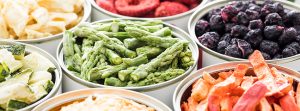Let it snow, let it snow, let it snow.
Bob and Sue Whitehead were beyond excitement. They were finally able to escape the business of the city, retire, and move into their dream house. It was a beautiful little cottage, nestled in the Mountains of the Pacific Northwest. They couldn’t imagine living anywhere else – or at least, not until the “Snowpocalypse” hit. The snow started falling, and it just kept coming. It continued for three weeks straight. The locals said it had never been like this before. The Snowpocalypse was smashing snowfall records. They were stunned.
The real surprise came when their pipes froze, and then cracked. Now they were stuck, snowed in, and without water.
Bob knew that clean drinking water is more important than food. He had read, that in one hour, without water, the body becomes thirsty. Twelve hours without water, dehydration begins to set in. Twenty-four hours without water and mental capacities diminish. Three days without water and you can perish.
They needed water, and they needed it now.
They began to collect snow, but they had no idea how much they would need for drinking, cooking, cleaning, and flushing.
How Much Snow is Needed Daily?
We were curious too. So Richard Martin (a contributing writer for Sheepdogman.com and Director of NorthWest Emergency Preparedness) ran a simple test
He writes,
“To get a better idea of the ratio between melted snow and eventual water, I did a simple test last night. I filled 2, one-gallon pitchers with open-ground snow and simply brought it indoors to melt.
Keeping in mind that the snow was a light, very airy covering (of 5 inches) from the last few days, I lightly packed it to maximize capacity without smashing it down into a more snowball-worthy compression in the two pitchers.
The next day, aside from some pine needles, etc., each pitcher held only about 1 quart of water. In a pinch, this would give you some drinkable water, but you should know how much is air-versus-snow.
NOTE: This exercise was only a test. The amount of water produced can vary significantly with different types of snow. Factors include: how hard you pack it, outside temperature, how old it is, and more.
In keeping with the FEMA guidelines, each person needs one gallon of water per person per day. WOW!
That means that if you are getting 1 quart of water per gallon of snow, you will need 4 gallons of snow every day. Some reports state that the ratio can be as high as 1/10 which means that you could need up to 10 gallons of snow for each person per day.
Additional FAQ’s
Is it safe to eat snow directly to avoid dehydration?
No! Remember, not to eat too much because it will rapidly reduce your core body temperature, making you highly susceptible to hypothermia, which can be fatal. Melt it, decontaminate it as best you can within your immediate means, and then consume it slowly. Also, remember that if you boil it, you will lose some to evaporation as well.
Is it safe to drink snow when melted?
Yes! Generally speaking freshly fallen snow is safe to drink when dissolved. However, do not assume that frozen water is safe to drink when dissolved. Use the same precautions with melted ice as you would with standing water. Also, be careful of snow that has been on the ground for some time as it can collect contaminates. When in doubt, boil.
Should I ration water?
No! Never Ration Water – the effects of dehydration far outweigh the benefit of saving water for later. Sometimes the effects of dehydration can overtake a person so swiftly they have no time to react. There have been reports of people dying from dehydration with a full water bottle right by their side. A state of unconsciousness can occur with little warning. Don’t guzzle, drink in sips, be methodical and if you do find water after being dehydrated drink it slowly. Drinking too quickly can cause your stomach to go into convulsions, and you will lose more fluid by vomiting. Stay hydrated my friend!
Additional Tips
Consider water storage now, so you don’t have to locate a source and go through the treatment process later.
Here are some good water storage options:

Small, transportable, bug-out ready options.
Foil Water Bags. These little bags are fantastic for medium to longer term storage.
On a recent hunt, we ran out of drinking water and decided to use a few of these foil water bags that had been in our camp box for a couple of years. The water tasted great.
The foil is thick, and there is enough room for expansion when frozen.
They’re great for throwing in packs, the glove box or to store in boxes. Recommended shelf life is five years. However, they will still be safe well beyond that – though the water will probably taste like metal.
The FDA does not require an expiration date on water. The “use by date” is something manufacturers put on by choice because they are concerned with users “enjoying” the taste. But who the heck cares about taste if it saves your life.
At 64 packs for $28.95, a two weeks’ supply (for one person) or 448 packets (14.77 gallons) = $202.65. You can get them here.

Blue Can – Premium Emergency Drinking Water. With a shelf life of over 50 years, these cans are fantastic for long term storage. They are hermetically sealed, tested BPA Free, No Chlorine or Flouride purified with 12 step filtration, reverse osmosis, and UV light treatment.
At 24 cans for $47.95, a 2 weeks supply (for one person) or 168 cans (15.75 gallons) = $335.65.
Currently, you can only buy these here.
Water Barrels. For those who have space, these 55-gallon, food-grade, water barrels are an affordable way to store a large amount of water for long-term disaster preparedness. I recommend that you replace the water every 5 years.
At 55 gallons per barrel, one barrel will last one person 55 days.
You can get your barrels here.
To store water in the barrels properly, be sure to use a food grade hose when filling, add water preserver (some say it’s not necessary if using city water which already has chlorine). Don’t forget a pump and smaller bottles such as the Aqua-Tainer for transport.
Be sure to have a treatment plan in place.
Water purification methods.

Distillation
If you have a highly suspect source of water, use distillation. Distillation is the only method that will remove microorganisms, as well as heavy metals, salts, and most chemicals.
Distillation involves boiling water and then collecting the vapor that condenses back to water. The condensed vapor will not include salt or most other impurities. To distil, fill a pot halfway with water. Tie a cup to the handle on the pot’s lid so that the cup will hang right-side-up when the lid is upside-down (make sure the cup is not dangling into the water), and boil the water for 20 minutes. The water that drips from the lid into the cup is distilled.
Another way you can distil water is to boil the water in a large pot, cover the pot with a clean cloth, so it catches all the steam. If you don’t have a cloth, you can also use moss. From time to time wring out the cloth or moss into another container.
Boiling
When distilling is not an option, and there isn’t as much concern about dangerous chemicals, boiling is the next best thing. Make sure you have a backup plan that includes pots, pans, and a propane stove or some other way to boiling water.
When boiling in a large pot or kettle, bring water to a rolling boil for one full minute, keeping in mind that some water will evaporate. Let the water cool before drinking.
Boiled water will taste better if you put oxygen back into it by pouring the water back and forth between two clean containers. Aeration will also improve the taste of stored water.

Chlorination

You can use household bleach to kill microorganisms. Use only regular household liquid bleach that contains 5.25 to 6.0 percent hypochlorite. Do not use scented bleaches, color-safe bleaches, or bleaches with added cleaners — because the potency of bleach diminishes over time, use bleach from a newly opened or unopened bottle.
Purification Tablets
Store some iodine and sodium chlorite tablets for purification as well.
Filters


There are many excellent filtering options available. We recommend starting with the smallest, easily transportable options such as the LifeStraw Steel and the Katadyn Hiker Pro Microfilter for you bug-out-bag. Moving up from there to the LifeStraw Mission High-Volume Gravity-Fed Water Purifier or the DayOne Response Water Bag for base camp or short-term water filtration needs.
For a long-term, stay in place solution nothing beats the Berkey systems.
In conclusion, snow is a safe and viable source of drinking water in an emergency situation. Just be aware that you will need to collect about 4 gallons of snow per person per day. Also, prepare to treat it as needed.
Happy melting my friends! Press on!
Please join in on the discussion in the comments below.
We love to hear from you!










Show Comments